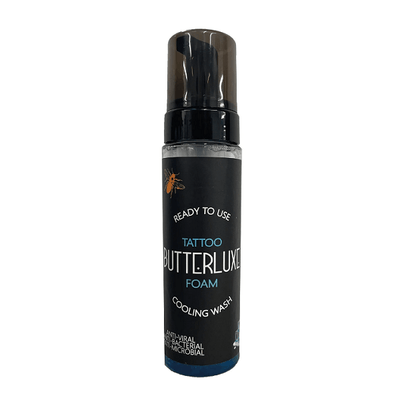A lot of people like to use numbing cream to make tattooing a pain-free process. While it's hard to understand for most artists, there are people out there that don't think the discomfort of being tattooed is a good thing. We are going to uncover how numbing creams work, and how to correctly apply them to your skin!
Why Don't Tattoo Artists Use Numbing Cream?
A lot of tattoo artists refuse to use their own numbing creams or sprays during their sessions. Two of the main reasons why they might not use creams are:
- They consider the pain of a tattoo part of the tradition
- They've used certain numbing creams before and they don’t feel like they worked
A large portion of the tattooed population considers pain to be an integral part of the tattooing process. People in this category tend to see any irritation or pain as just another aspect of their tattoo that adds to its significance. If you fall into this category, you should be aware that you will eventually encounter a customer who has a very low pain threshold. For these clients, the pain isn't tolerable - but that doesn't make their tattoo any less important to them.
If you're in the second category, it's likely that the numbing cream you used wasn't particularly effective, but that doesn't rule out the possibility that all numbing creams and sprays are worthless. Continue reading to learn how numbing cream works and how to make it work for you.
How Does Numbing Cream Work?
How numbing cream works depends on which active ingredient is in the mix. Most tattoo numbing ingredients fall into three categories: nerve deadeners, nerve blockers, and vasoconstrictors.
Nerve Deadeners
Chemicals like Lidocaine, for example, momentarily paralyses nerves in the skin, preventing them from perceiving pain. Nerve relaxants are fantastic, but they rarely penetrate past the surface of the skin, therefore they won't be 100% effective for tattoos, but they will definitely help the pain.
Nerve Blockers
Because of these substances, your nerves still perceive pain, but they don't deliver the "ouch!" signal to the brain. Tetracaine and benzocaine, its fellow nerve blocker, are both pH-neutral, as are most nerve blockers. Nerve blockers are frequently paired with nerve deadeners to avoid involuntary flinching because they do not prevent nerves from reporting pain on their own.
Vasoconstrictors
Vasoconstrictor drugs are the most effective numbing agents available. Epinephrine is a vasoconstrictor that works by forcing blood vessels to tighten, reducing bleeding. These compounds also slow down absorption, allowing them to stay longer when combined with other numbing agents.
How To Use Tattoo Numbing Cream
When it comes to using numbing cream in your shop it can take a little bit of trial-and-error to get the process completely right. Here are the best steps you can follow to keep your sessions pain-free:
Pick the right set-up; not every numbing cream is right for every tattoo.
If a client comes in with a random numbing cream off the shelf they're going to need to reschedule; the right numbing cream makes a huge difference in how long it lasts and if it can be applied during their session. If they bring in a cream without epinephrine, it's going to wear off halfway through their tattoo and they're going to get a very unpleasant surprise.
Wash the client's skin with green soap
You'll want to remove dead skin and oil before you apply your numbing solution. Green soap will work just fine, but some green soaps do contain a small amount of alcohol, which can make skin more acidic and slow down or stop some creams and sprays.
Apply the numbing cream
Because you'll need to wait 5-30 minutes for the area to numb after using your cream or spray, it's best if a client can execute stages 2 and 3 at home. The length of time it takes to numb depends on the type of numbing cream you use and the area you apply it to: thicker skin takes longer to numb than thin skin.
Wash off your numbing cream and start the tattoo.
You'll wash off the solution and begin the tattoo after the area is numb. It doesn't have to be on the skin to function, and certain topically safe numbing creams might irritate injured skin.
Hopefully these tips can help you when deciding whether or not to use tattoo numbing cream/spray in your next tattoo session.
What’s your personal experience with numbing solutions? Let us know in the comments below!
Blog Inspiration: Wet Tattoo: Do Tattoo Numbing Sprays Work?




























































 Studio supplies
Studio supplies












 Power & batteries
Power & batteries







 Aftercare
Aftercare



















 Apprentice
Apprentice


 Piercing & jewellery
Piercing & jewellery







 PMU supplies
PMU supplies



 New arrivals
New arrivals
 Gift vouchers
Gift vouchers
 Shop all
Shop all










































